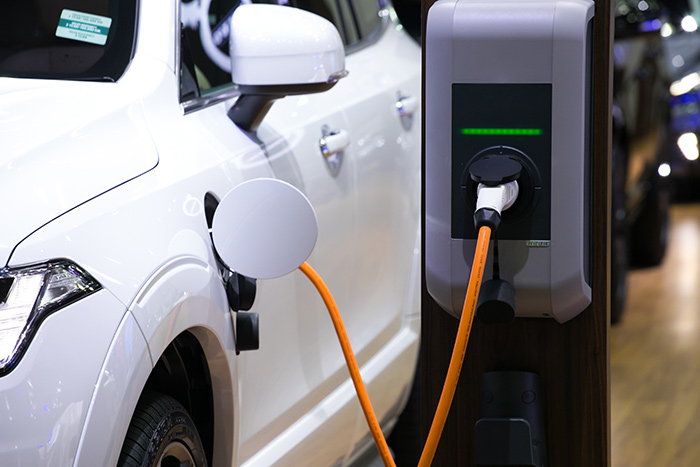
The number of electric cars in the U.S. continues to increase, and many homeowners are choosing to purchase these vehicles to reduce fuel costs and help the environment. Like any device that requires electricity to charge it, homeowners need to be mindful of the limitations of their electrical system when charging their vehicles at home.
To reduce the risk of damage to both a home's electrical system and to the vehicle's battery, homeowners should follow some basic safety guidelines:
Be aware of the type of charging station needed to charge the vehicle. Many electric vehicles can charge using a standard three-prong, 110-volt wall outlet, but certain types of vehicles, including Tesla models, may require installation of specific wall connectors in order to charge. Consult the owner's manual or the manufacturer's website for more information about the connection type needed for each vehicle.
Consider the time needed to fully charge the battery. For many electric vehicles, charging using a standard 110-volt outlet can take 18 hours or more. Many homeowners who wish to charge their vehicles more quickly opt to install a 240-volt charger (also known as a Level 2 charger). A Level 2 charger can charge at an average rate seven to eight times faster than a Level 1. Individuals who regularly drive longer distances on a daily basis frequently opt for a Level 2 charger.
Keep in mind what other appliances might be on the same circuit as the charger. If high power drain appliances like heaters, air conditioners or dryers are on the same circuit, it could cause the circuit breaker to trip, and increases the risk of electrical fire. Whenever possible, always plug a vehicle's charging cord directly into the wall outlet. Extension cords increase the risk of electrical fires significantly, especially if they are not used properly. If you do have to use an extension cord to charge a vehicle, make sure the cord is a high enough gauge to handle the current, and use the shortest length of cord possible. When in doubt, consult a qualified electrician to ensure that the home has proper outlets and electrical service installed. Old or loose wiring and improperly installed breaker panels can lead to severe damage, and can even cause fires.
Even the most diligent homeowner can't prepare for every scenario. For more information, contact Lallis & Higgins Insurance.

